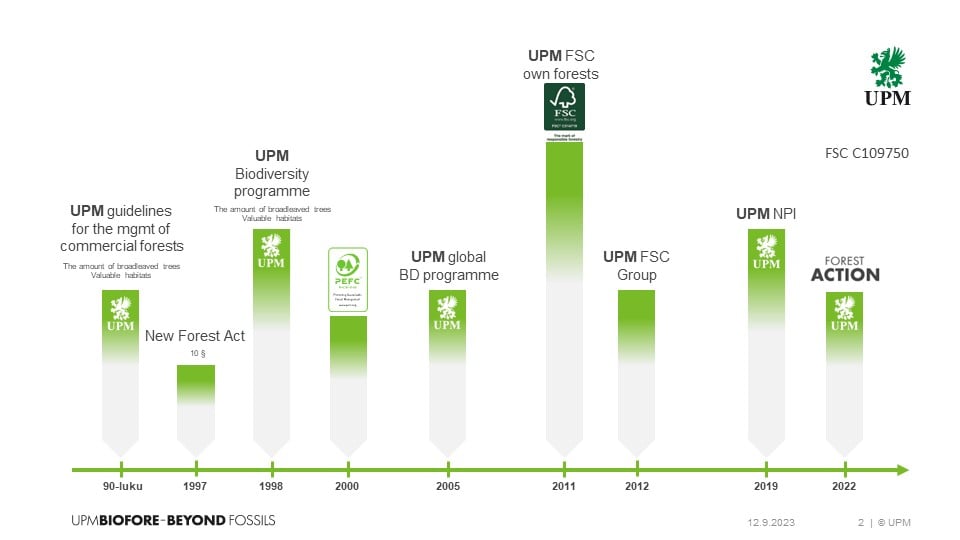We take forest biodiversity into account in our everyday activities, but I admit we are not perfect. Our businesses use the largest plants in our forests, the trees, as raw materials to produce renewable products that replace fossil-based raw materials. Logging always changes the conditions, species, landscape and, for example, the microclimate of an individual site. This is realism. Nevertheless, a company that utilises forests can and, above all, wants to improve biodiversity in the forest ecosystem.
We see biodiversity as part of responsible business and as an enabler of our current and, above all, future business, not as a constraint. This is a key reason why we have been working purposefully to improve biodiversity in commercial forests for a long time.
The first steps were taken back in the 1990s, when we launched our biodiversity programme. In 25 years, we have come a long way. For example, we have certified all our forests with PEFC/02-44-41 and FSC® (FSC-C105876), participated in numerous co-operation and development projects, developed our own guidelines on how to take biodiversity into account, and significantly increased the protected area of our forests.
In 2018, we committed to manage our forests to achieve a net positive impact on forest biodiversity by 2030. We monitor the state of our forests against nine indicators. These indicators include the amount of broadleaved trees, protected area and the amount of decaying wood as well as the number of alternative regeneration methods and collaboration projects. You can find out how we are doing here.
We have also made a number of commitments in recent years that we believe will help us achieve our biodiversity targets. We have committed to end clear-cutting in lush-drained swamps and to double the amount of decaying wood and broadleaved trees in our forests.

Biodiversity work is about everyday decisions: whether this is a valuable habitat to protect, where this is the best place for retention trees, how do I avoid breaking down decaying wood, how do I leave enough broadleaved trees standing, and how do I leave the water protection zone untreated. In addition to these day-to-day activities, we work with various stakeholders, such as the Natural Resources Institute Finland (LUKE), the Finnish Osprey Foundation, the Finnish Freshwater Foundation and Birdlife.
The question remains, is all this enough? We don't have the answer yet due to long response times in forests. The biodiversity roadmap, published today, 12 September by the Finnish Forest Industries Federation and the Finnish Sawmills Association, and the accompanying background research show positive developments. However, we can be fairly certain that these measures will not solve everything. That is why we want to continue to do things better and look for new opportunities to improve what we do.
Towards science-based targets for nature
How does sustainable forestry enhance biodiversity?
Sustainable future grows in the forests — new Forest Action report compiles UPM’s best practices
It is easy to say that protect more and stop clear cutting forests. But we continue to need wood raw materials to replace fossil-based materials and we need more programmes so that can move ecological and economic objectives forward side by side.
